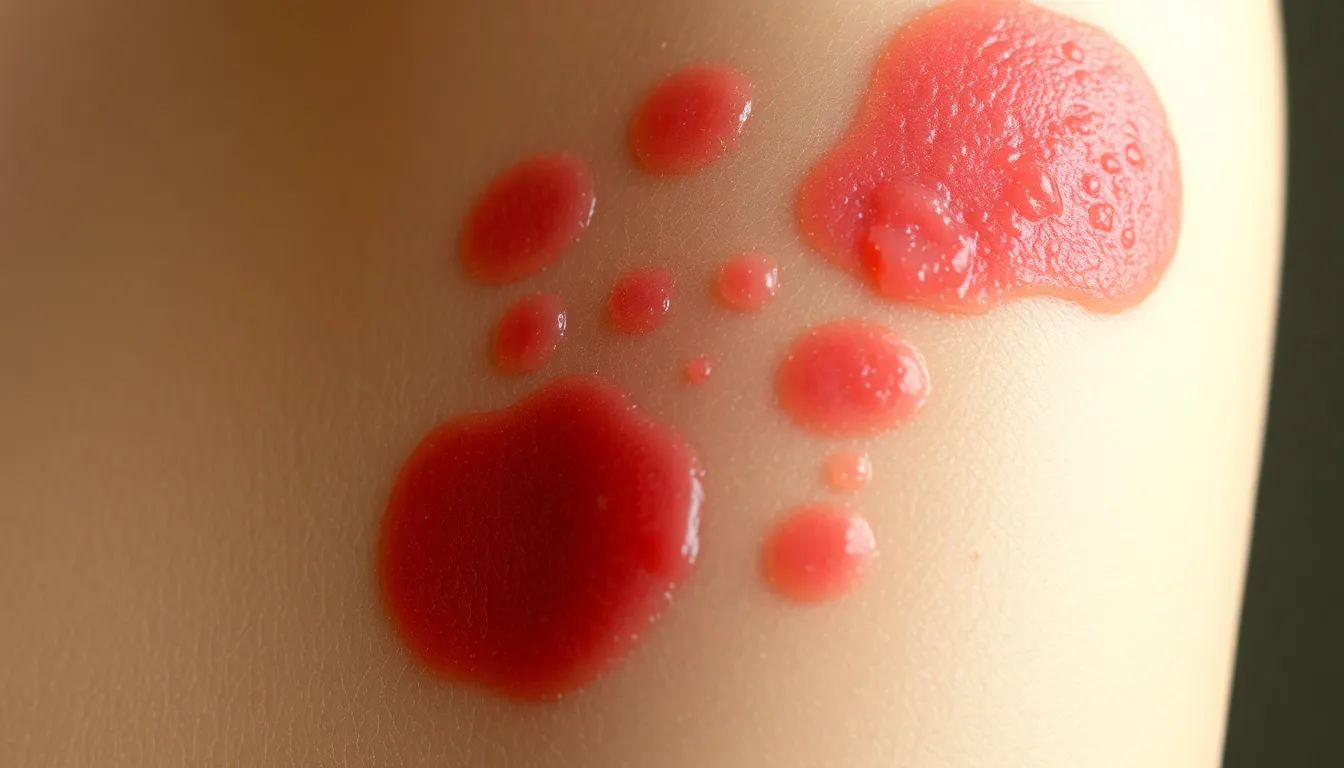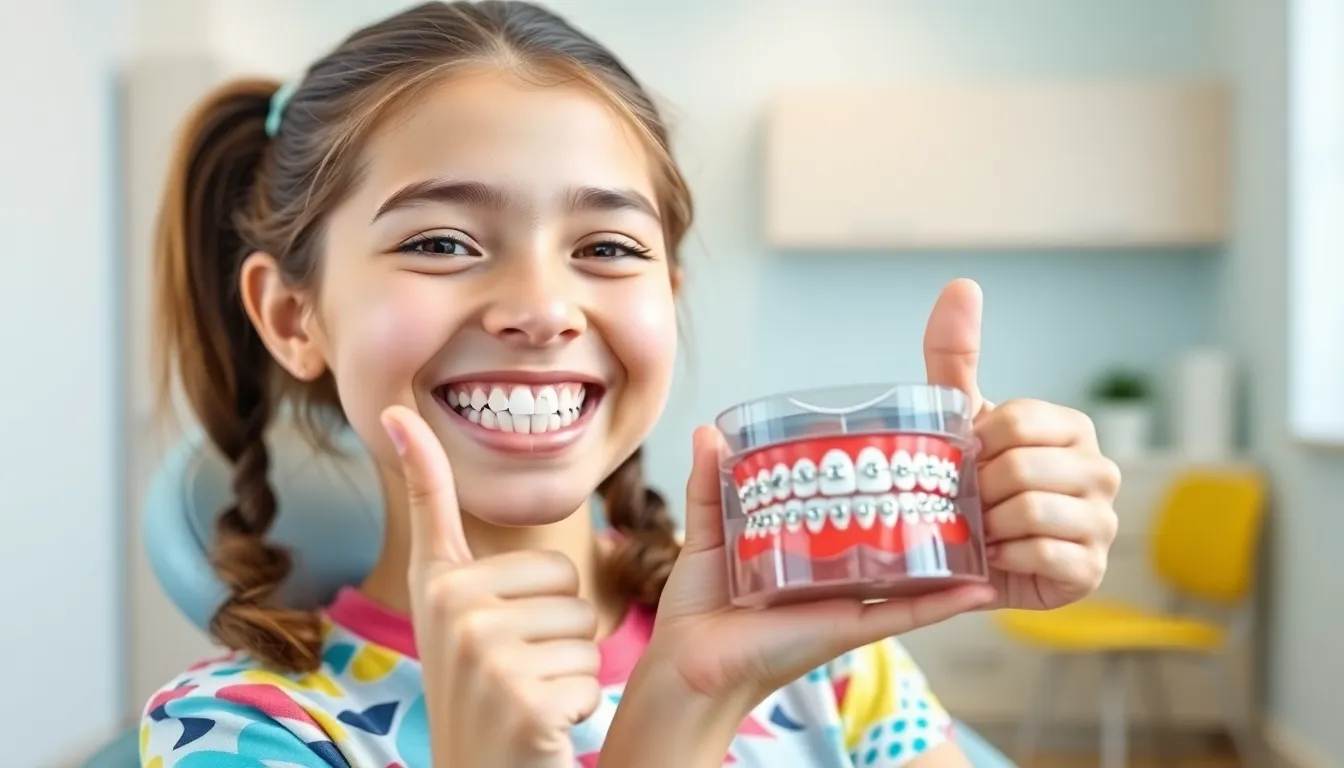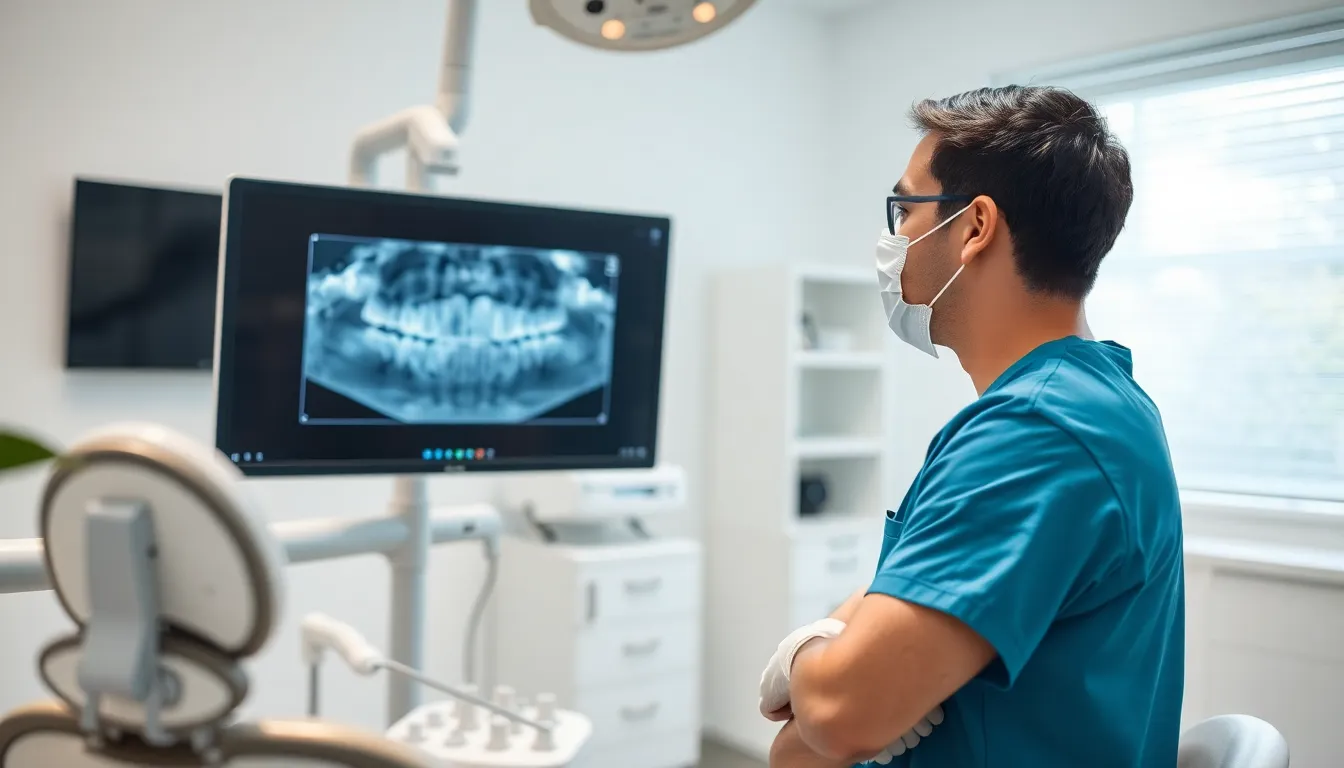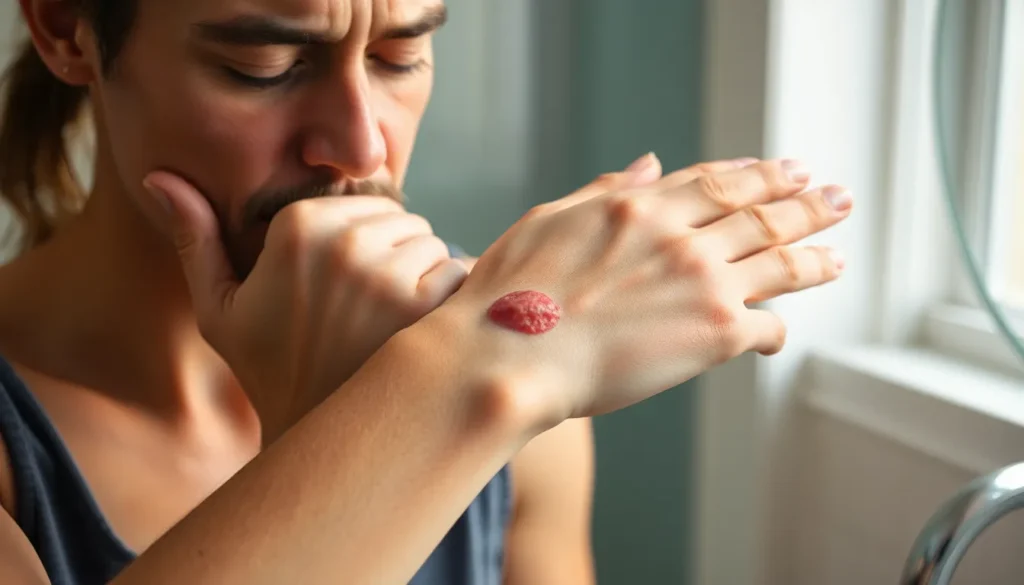Table of Contents
ToggleSkin yeast infections can be an uncomfortable and often embarrassing issue. Caused by an overgrowth of fungi like Candida, these infections thrive in warm and moist environments, making certain areas of the body more susceptible. Understanding the signs and symptoms is crucial for early detection and effective treatment.
Many people might not realize that skin yeast infections aren’t limited to just one part of the body. They can occur in various locations, including folds of skin, underarms, and even between toes. By recognizing the risk factors and prevention strategies, individuals can take control of their skin health and minimize the chances of recurrence.
Understanding Skin Yeast Infection on Skin
Skin yeast infections arise from an overgrowth of fungi, primarily from the Candida species. These infections occur mostly in warm, moist environments on the body, making specific areas more susceptible.
What Is a Skin Yeast Infection?
A skin yeast infection is a fungal infection that develops when there’s an excessive amount of yeast on the skin. It’s commonly characterized by red, inflamed patches, itching, and sometimes a burning sensation. Skin yeast infections often manifest in skin folds, such as under the breasts, in the groin area, and between toes. Early identification is crucial for effective treatment.
Common Causes of Skin Yeast Infection
- Moisture: Excessive sweating creates a favorable environment for yeast to thrive.
- Heat: Warm temperatures can enhance yeast proliferation on the skin.
- Antibiotic Use: Antibiotics can disrupt the balance of good and bad bacteria, allowing yeast to grow unchecked.
- Weakened Immune System: Immunocompromised individuals are more prone to infections.
- Hormonal Changes: Fluctuations in hormones, such as during pregnancy or menstruation, can promote yeast overgrowth.
- Obesity: Increased skin folds in overweight individuals can harbor moisture and heat, leading to infections.
- Skin Conditions: Pre-existing skin conditions, like eczema or psoriasis, can increase vulnerability to yeast infections.
Symptoms of Skin Yeast Infection on Skin

Skin yeast infections present several characteristic symptoms, which are crucial for identifying the issue early. Early recognition aids in effective treatment and prevention of further complications.
Recognizing the Signs
- Redness: Affected areas display red, inflamed patches of skin.
- Itching: Intense itching occurs, prompting scratching and potential skin damage.
- Burning Sensation: Many experience a burning feeling, particularly when the skin rubs together.
- Scaling: Skin may flake or scale, indicating irritation and fungal activity.
- Rash: Localized rashes may develop, which often appear shiny or moist.
- Odor: A distinctive, unpleasant odor may arise from affected regions.
Differentiating From Other Skin Conditions
- Eczema: Unlike eczema, which often presents with dryness and cracks, skin yeast infections typically result in wet, inflamed patches.
- Psoriasis: Psoriasis features thick, silvery scales and is usually less itchy compared to yeast infections.
- Bacterial Infections: Bacterial infections frequently cause more intense pain and discharge, while yeast infections primarily induce itching and irritation.
- Contact Dermatitis: Contact dermatitis results from an allergic reaction and shows distinct blisters or welts, differing from the smooth, inflamed patches of a yeast infection.
- Fungal Infections: Different fungal infections may have similar symptoms, but yeast infections often occur in warm, moist areas, while other fungal infections can present anywhere on the body.
Recognizing these symptoms and differences enables quicker action, ensuring appropriate care for skin health.
Treatment Options for Skin Yeast Infection
Effective treatment options exist for skin yeast infections, focusing on reducing fungal growth and alleviating symptoms. These alternatives include over-the-counter remedies, prescription treatments, and home remedies.
Over-the-Counter Remedies
Over-the-counter (OTC) antifungal creams and ointments offer quick relief. Common options include:
- Clotrimazole: A topical antifungal that disrupts fungal cell membranes, commonly used for localized infections.
- Miconazole: Another topical treatment, effective against various fungal strains, reducing inflammation and itching.
- Terbinafine: Available as a cream, it targets fungal growth directly, alleviating symptoms and promoting healing.
These remedies work best for mild to moderate cases and require consistent application to achieve desired results.
Prescription Treatments
When OTC options fall short, healthcare professionals may recommend prescription treatments. Key options include:
- Ketoconazole: An oral or topical antifungal medication effective for severe infections, particularly when other treatments fail.
- Fluconazole: An oral antifungal often prescribed for extensive or recurrent infections due to its systemic effects.
- Ciclopirox: A topical solution that prevents fungal cell growth, often used for chronic or resistant cases.
Patients should consult their healthcare provider for personalized treatment plans, especially if symptoms persist or worsen.
Home Remedies and Natural Solutions
Various home remedies and natural solutions may complement medical treatments. Effective options include:
- Coconut oil: Its antimicrobial properties, combined with moisturizing effects, help inhibit fungal growth while soothing irritated skin.
- Apple cider vinegar: Known for its antifungal effects, it can be diluted with water and applied to the affected areas to restore skin pH balance.
- Tea tree oil: This essential oil possesses potent antifungal and anti-inflammatory properties, making it valuable for topical application.
Before using home remedies, individuals should consult a healthcare professional, especially if they have sensitive skin or underlying health conditions.
Prevention Strategies
Preventing skin yeast infections relies on proactive measures that maintain skin health. Implementing effective strategies reduces the risk of fungal overgrowth.
Maintaining Healthy Skin
Maintaining healthy skin significantly decreases the likelihood of yeast infections.
- Keep skin dry: Ensure skin is thoroughly dried after bathing, especially in folds and creases.
- Use breathable fabrics: Wear loose-fitting, moisture-wicking clothing made from natural materials.
- Practice good hygiene: Bathe regularly and use antifungal soap if prone to infections.
- Moisture control: Apply powder or antifungal powder in areas prone to excessive moisture, like underarms and groin.
- Avoid harsh products: Limit the use of irritating soaps, body washes, or lotions that disrupt skin’s natural barrier.
Lifestyle Changes to Reduce Risk
Lifestyle changes play a critical role in reducing the risk of skin yeast infections.
- Stay hydrated: Drink sufficient water daily to maintain skin hydration.
- Limit sugar intake: Reduce consumption of sugary foods and refined carbohydrates, which stimulate fungal growth.
- Manage weight: Maintain a healthy weight through diet and exercise to minimize skinfold development.
- Improve immunity: Support immune health with a balanced diet, regular exercise, and adequate sleep.
- Avoid antibiotics when unnecessary: Limit antibiotic use, as they can disrupt the natural balance of skin flora.
By implementing these strategies, individuals can significantly lower the incidence of skin yeast infections and promote overall skin health.
Skin yeast infections can be uncomfortable and persistent but understanding their causes and symptoms is key to effective management. By recognizing early signs and differentiating them from other skin conditions, individuals can seek appropriate treatment promptly.
Adopting preventive measures is essential in reducing the risk of recurrence. Maintaining dry skin practicing good hygiene and making informed lifestyle choices can significantly enhance skin health. With the right approach and awareness, managing skin yeast infections becomes a more achievable goal, leading to healthier skin and improved overall well-being.







